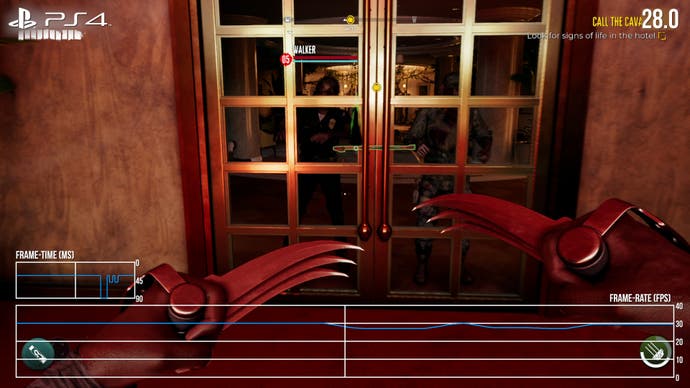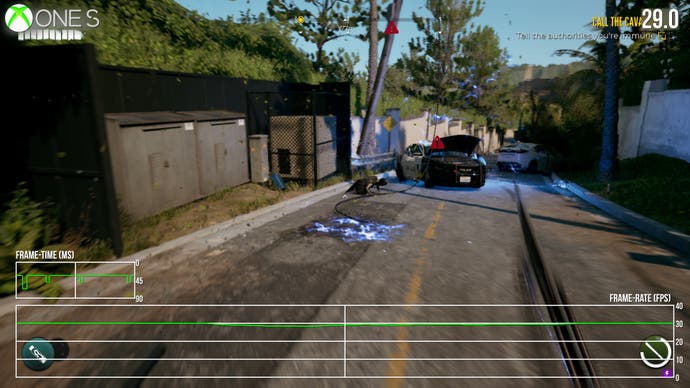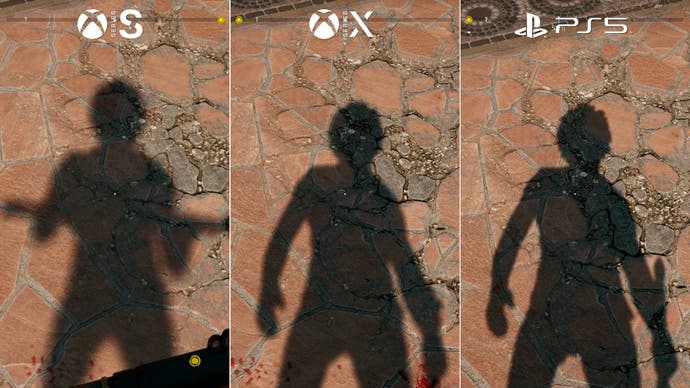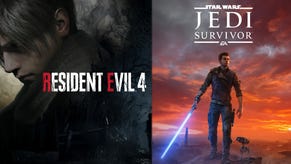Dead Island 2 delivers solid performance and image quality on all consoles
All last-gen and modern PlayStations and Xboxes tested.
Dead Island 2 has had a torturous road to release, arriving on PS5, Xbox Series X/S, last-gen consoles and PC some nine years after the game was first revealed - but there's a surprising level of technical polish evident across every console version. Dead Island 2 also does more than you'd expect from a typical Unreal Engine 4 release, with some novel technical features added on by developers Dambusters that are definitely worth covering.
In this article, we'll tackle those novel additions - and how the game runs on last-gen consoles, including PS4, PS4 Pro, Xbox One and Xbox One X. We'll also take a look at what visual upgrades can you expect by opting for the current-gen versions on PS5, Series X or Series S.
Let's get the bloody stuff out of the way first. Set to a sunny LA backdrop, Dead Island 2's focus on extreme gore is its trademark - with heavy violence, dismemberment and body physics, all enabled by the game's 'FLESH Engine' or 'Fully Locational Evisceration System for Humanoids'. This proprietary tech simulates the physics of body dismemberment to a grisly level of detail, from clothing and skin to muscles, organs and even the skeleton beneath. It's grim, disgusting stuff, achieved with real technical prowess. Suffice it to say that swords, guns and elemental dangers all have terrifyingly realistic consequences on the unfeeling zombie hordes, making this easily one of the most impressive parts of Dead Island 2's technical makeup.
Being a project that began before current-gen consoles were released - in fact, the game was announced a year after the release of the PS4 (!) - it's clear Dead Island 2 is optimised for last-gen machines, with a few upgrades beyond this for PS5, Series X or Series S, but no graphics mode toggles whatsoever. The biggest complaint then is that the game is a little lacking in ambition on the most powerful consoles, but at least the level design is beautifully dense with detail, with volumetric effects, screen-space reflections and body physics all included regardless of your chosen machine.
Let's go through each of the consoles in turn, starting with the base Xbox One edition - the most constrained last-gen console. Xbox One runs at a native 1600x900 resolution with a 30fps target that's mostly stuck to - there are occasional hitches and single frame drops, triggered by UI changes or picking up a weapon, but it's a surprisingly smooth experience that shows evidence of plenty of optimisation and no signs of dynamic resolution scaling during our testing.
Switching over to base PS4, it's again positive, with a native 1080p presentation and the same core visual settings as the base Xbox One. However, the 30fps frame-rate target isn't held quite as well, with slightly more aggressive hitching in places - but most areas remain a watertight 30fps. Note that neither base PS4 or Xbox One are able to host online games at launch - PS4 Pro, Xbox One X or a current-gen console are required to host sessions, although Dambusters is aiming to address this restriction in the weeks following launch.



Next up are the enhanced machines: Xbox One X and PS4 Pro. Both consoles use the same visual settings as their older counterparts, with textures, shadows and alpha effects all matching, but push a crisper image with a native 2560x1440 presentation. Again, the frame-rate target is 30fps, with each machine sticking to it almost perfectly, with rare incidences of one frame dips but overall a robust experience all around.
For current-gen console owners there's even better news. PS5, Series X and Series S each get a push to 60fps, and in the case of PS5 and Series X there's a sizeable resolution boost as well. The PS5 version runs at a native 3072x1728 with a perfectly-held 60fps, while Series X targets the same resolution and also hits 60fps outside of a few brief drops while using elemental attacks. Jumping over to Series S, performance remains excellent with only occasional drops from the 60fps target, with heavier effects work causing frame-rates to drop into the high 50s in rare instances. However, resolution is lower than on the other current-gen machines, with a native 1920x1080 presentation - a fair trade for 60fps, I think it's fair to say.
PS5, Series X and Series S also get improvements to shadow quality and effects work, plus environmental animations for trees - where the last-gen versions present them as static objects. However, all consoles use cube-mapping in places where SSR isn't applied, and the result is low resolution, static textures in some areas - which look particularly out of place on PS5 and Series X. Still, the shadow, effects and animation upgrades are neat extras even if they don't significantly change the look of the game, while the move to 60fps being much more impactful.


Faster loading times are another reason to opt for the next-gen releases, with the PS4 requiring around 76 seconds to load the Halperin Hotel, compared to seven seconds on PS5 - a difference that is exasperated by the segmented world design and quests that see you often returning to previously-explored areas.
In comparing all seven console releases of Dead Island 2, there's a clear pecking order in place that sees PS5 and Series X on top with 60fps gameplay, faster load times, better resolutions and higher settings. What's surprising though is just how well-rounded the turnout is for the last-gen machines, which are limited to 30fps but otherwise perform extremely competently.
Given its long development saga that saw the game switch hands several times, the fact that Dead Island 2 works as well as it does on every last-gen and current-gen Xbox and PlayStation machine ought to be celebrated. The game certainly feels like a last-gen release, a PS4 and Xbox One game embellished for newer systems, but its principle of 'gruesome fun' and its eye-catching body physics shine through regardless of platform - making it a sequel well worth playing.









